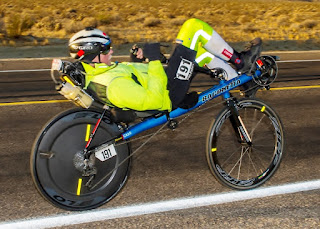I
recently wrote a blog post describing why I’m less interested in
participating in organized races (Why I Am Losing Interest in Organized Races). Suffice it to say that awareness of this has
been somewhat disorienting to me, resulting in quite a bit of quiet (and not so
quiet) introspection and wondering.
My
brother George. And recent pleasant dreams.
George
was four years older than me. My
childhood memories of him are that he played `rough’. He never beat me up, though he was tough as
steel, athletic and powerful. I remember,
once, when I was about 12 years old, whining to him that I wanted to see a
movie playing at a drive-in he and his girlfriend were going to. Never did I
imagine that they had no intention of `watching’ the movie. Nevertheless, he relented and took me. What a party crasher I must have been.
At
times he would push me around so that I’d get on my back and fend him off with
my legs and feet. We would both be laughing in this playful contest.
When
I tried to run away (to the back yard) he suggested I use our father’s ties as
a rope to descend to the ground from our second-floor bedroom. I’m sure he knew what he was doing.
In
his adolescence and early adulthood, he became a physical and athletic
phenomenon. As a high school freshman,
he played varsity football. I once saw him
empty a carful of noisy teenagers, reaching in and throwing them out, one by one.
He
was ferocious and fierce. And he was a
no-nonsense delinquent. His buddies were
local teenage hoodlums. He was arrested for
fights several times by the local police.
Our parents once had to collect him from the village jail, discovering
that he was bruised and bloody after resisting arrest by four cops.
He
dropped out of high school. Somehow he enlisted
in the Air Force, only to be discharged for misconduct after a year.
We
drifted apart as we grew up. I was
anything BUT a gifted physical and athletic person.
One
day, at 24, I got a phone call from my father (a shocking rarity) telling me that
George was in a serious motorcycle accident in California and that he wanted me
to join him on a flight to his hospital.
He had `T-boned’ a vehicle while on his motorcycle and had broken his
back on a curb. He was paralyzed from
the waist down.
After
a full year in VA hospitals, he was discharged in a wheelchair.
He
spent the next four years struggling to adjust to being an ill-educated, temperamentally
intolerant cripple.
Again, I got that phone call from our father. My big brother George had been found dead at 33 in
his apartment. He had taken all his leg
tranquilizers, put them in a McDonald’s milkshake, pulled the bedsheet over his
head and taken his own life.
Not a bike ride goes by that I don’t think of him when I’m pushing and pushing and pushing with my powerful legs on the bike pedals.

















